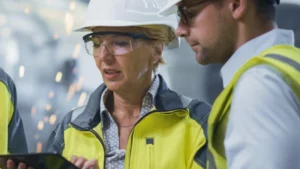How to spec your mesh (you are here)
Mastering the successful specification of last chance filter meshes has significant implications for both system efficiency and long-term durability. Within this guide, we will navigate the key elements that factor into mesh selection.
Step 1: Defining your micron rating
Particles must be filtered to protect costly valves and equipment to prevent sudden, catastrophic failure in fluid systems. Arguably, one of the pivotal starting points in specifying your mesh centres on understanding what particles we are filtering out. This involves defining specific particulate matter that will stealthy bypass primary filtration units or infiltrate during regular service operations and component replacements, thus requiring capture by a last chance filter.
Particulate sizes directly impact our choice of micron rating; hence an obligatory first step in spec is agreeing upon a viable micron rating suitable to target contaminant profile at play. The specifics will significantly influence which micron rating is appropriate for your application. Knowing this will provide you with direct indications about the mesh you should employ. The micron rating selection limits the type of meshes available for your requirements. If higher ratings are required, then coarser meshes would suffice; but lower microns demand finer ones. Check our guide if you need help navigating through common mesh sizes.
Step 2: How you should be considering flow rate
Your system needs to be built around a certain flow rate and pressure. Which is why knowing the maximum allowable differential pressure across the filter in your current fluid system is crucial.
As an example, a particular interesting case we came across is – a rigid hauler with starved brake coolant caused by filtration flow impedance. This caused the brakes to fail, thankfully nobody was hurt before we intervened and implemented our filtration system. Also, familiarise yourself with different types of mesh weaves, each exemplifying performance under heightened differentials and high flow episodes.
Step 3: How are you going to install it
You must also consider how your last chance filter should integrate into your design or system. Some factors such as what particular diameter pipe being installed forms should be considered. This outlines which geometry type should be applied to your solution.
Linking back to step 2, we have the opportunity to amend the last chance filter geometry to increase active mesh area to satisfy flow rate requirements even when you are limited by design space.
Step 4: Material options
Reflect upon these parameters and define specifically what is the ideal operational temperature? Should you speculate corrosive effects appearing outside controlled environments compelling you towards adopting corrosion-resistant materials instead? What pressure is being applied to this mesh, is the material suitable to withstand the induced stress?
With the careful consideration of all the above, spec’ing the mesh of your last chance filter should hopefully become a little less daunting task at hand and, hopefully, we helped you to ensure optimal performance upon installation and span your filters’ lifecycles. If you need further help, please get in touch.

